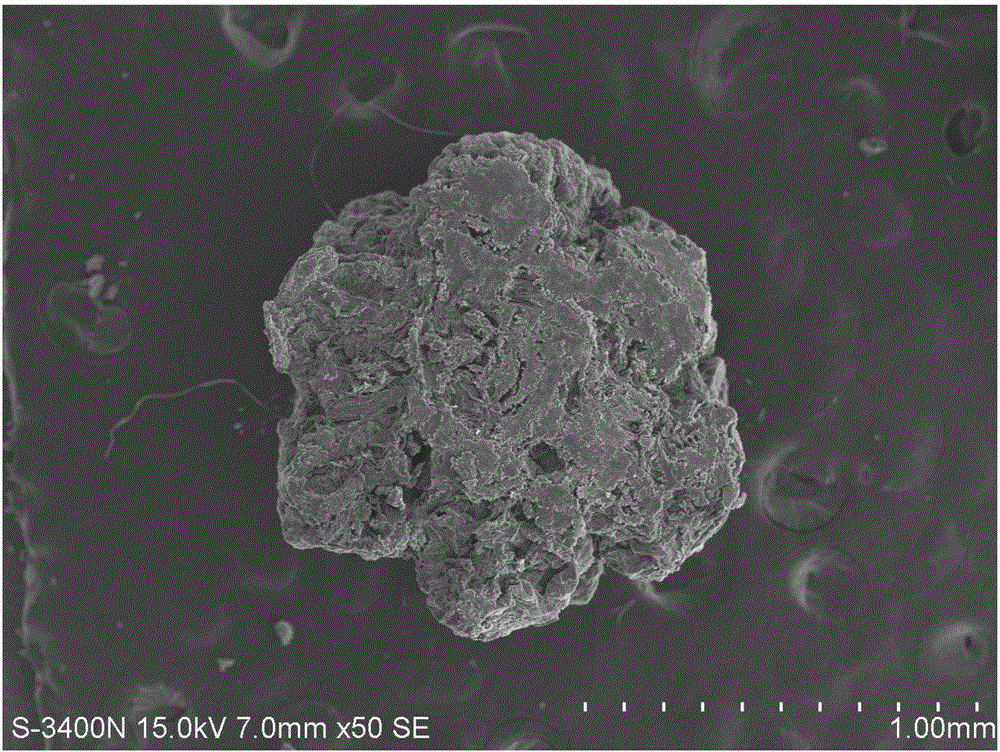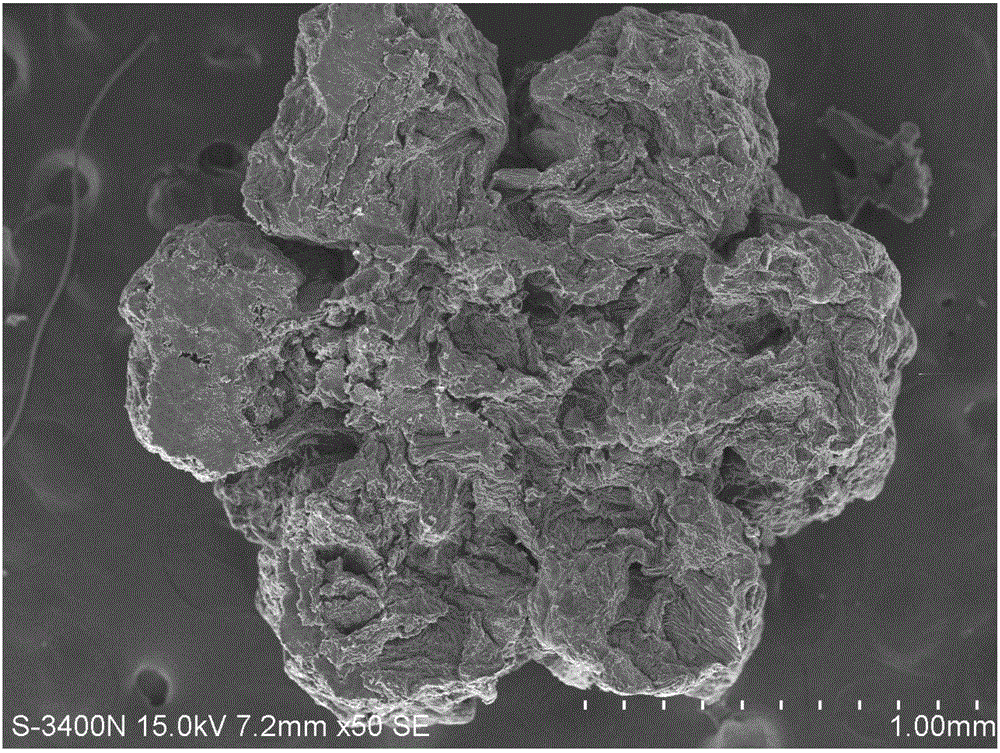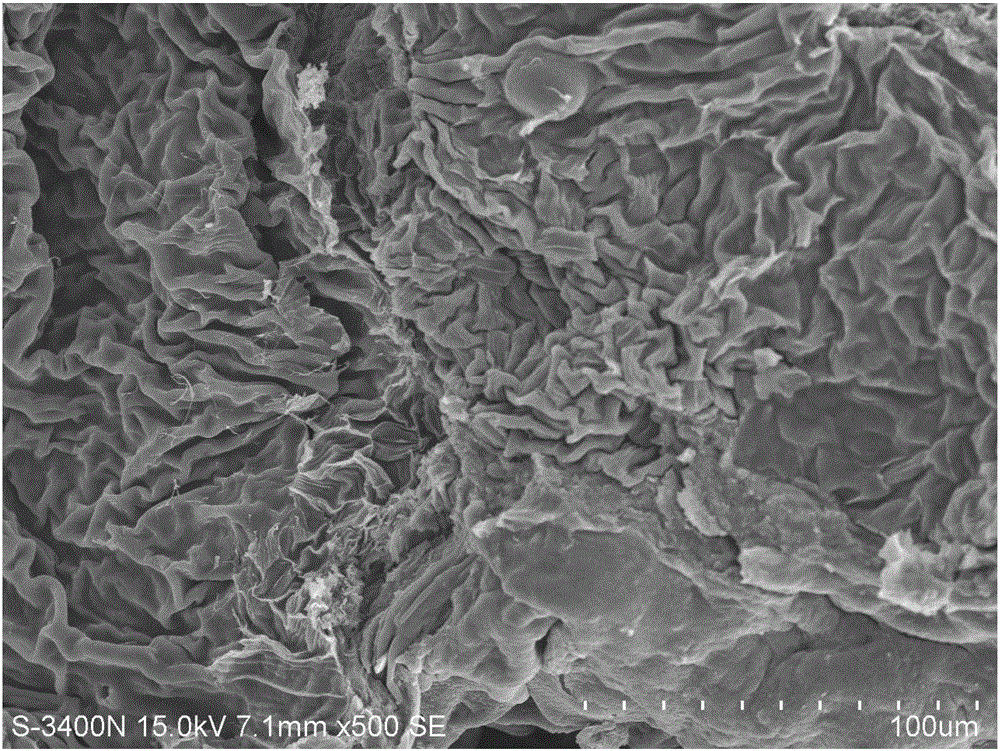High-specific-surface-area basic oxide surface-modified silkworm faeces-based microporous carbon material and preparation method and application thereof
A basic oxide, high specific surface technology, applied in the field of carbon materials, can solve the problems of non-target biological damage environment, excessive pesticide residues in agricultural products, low pesticide utilization efficiency, etc., to improve the generation reaction speed, short reaction time, improve Effect of Porosity and Specific Surface Area
- Summary
- Abstract
- Description
- Claims
- Application Information
AI Technical Summary
Problems solved by technology
Method used
Image
Examples
Embodiment 1
[0037] A method for preparing a silkworm excrement-based microporous carbon material modified on the surface of a high specific surface alkaline oxide, comprising the following steps,
[0038](1) Mix and swell the original silkworm excrement and deionized water according to the mass-to-body ratio of 1:100. After swelling at 30°C for 3.0 hours, remove the silkworm excrement and freeze-dry it. First, freeze and pretreat at -20°C for 4 hours. Then lower the temperature to -60° C. and freeze-dry for 24 hours to obtain freeze-dried silkworm excrement.
[0039] in N 2 In the atmosphere, 10.0 g of freeze-dried silkworm excrement was raised to 700°C at a heating rate of 5°C / min, kept at 700°C for more than 2.0 hours, and then cooled to room temperature to prepare carbonized silkworm excrement.
[0040] (2) Combine carbonized silkworm excrement and KOH 2 Mixed at a mass ratio of 1:1, at N 2 In the atmosphere, the temperature was raised to 650°C at a rate of 5°C / min, and kept at 650°...
Embodiment 2
[0044] (1) Mix and swell the original silkworm excrement and deionized water according to the mass-to-body ratio of 1:120. After swelling at 35°C for 2.5 hours, remove the silkworm excrement and freeze-dry it. First, freeze it at -20°C for 3 hours. Then lower the temperature to -55° C. and freeze-dry for 36 hours to obtain freeze-dried silkworm excrement.
[0045] In an Ar atmosphere, 10.0 g of freeze-dried silkworm excrement was raised to 800 °C at a heating rate of 5 °C / min, kept at 800 °C for more than 2.0 h, and then cooled to room temperature to prepare carbonized silkworm excrement.
[0046] (2) Combine carbonized silkworm excrement and KOH 2 Mixed at a mass ratio of 1:2, in N 2 In the atmosphere, the temperature was raised to 750°C at a rate of 5°C / min, and kept at 750°C for 4.0h to carry out the pore expansion reaction. After cooling down to room temperature naturally, the obtained solid was dissolved in 1mol / L HCl to wash and dissolve KOH. Then use deionized water t...
Embodiment 3
[0050] (1) Mix and swell the original silkworm excrement and deionized water according to the plastid ratio of 1:140, swell at 40°C for 2.0 hours, remove the silkworm excrement and freeze-dry it, and first freeze and pretreat it at -25°C for 2 hours, Then lower the temperature to -50° C. and freeze-dry for 48 hours to obtain freeze-dried silkworm excrement.
[0051] in N 2 In the atmosphere, 10.0 g of freeze-dried silkworm excrement was raised to 850°C at a heating rate of 5°C / min, kept at 850°C for more than 3.0h, and then cooled to room temperature to prepare carbonized silkworm excrement.
[0052] (2) Combine carbonized silkworm excrement and KOH 2 Mixed at a mass ratio of 1:3, in N 2 In the atmosphere, the temperature was raised to 800°C at a rate of 5°C / min, and kept at 800°C for 3.0h to carry out the pore expansion reaction. After cooling down to room temperature naturally, the obtained solid was dissolved in 1mol / L HCl to wash and dissolve KOH. Then use deionized wat...
PUM
| Property | Measurement | Unit |
|---|---|---|
| Specific surface area | aaaaa | aaaaa |
| Total pore volume | aaaaa | aaaaa |
Abstract
Description
Claims
Application Information
 Login to View More
Login to View More - R&D
- Intellectual Property
- Life Sciences
- Materials
- Tech Scout
- Unparalleled Data Quality
- Higher Quality Content
- 60% Fewer Hallucinations
Browse by: Latest US Patents, China's latest patents, Technical Efficacy Thesaurus, Application Domain, Technology Topic, Popular Technical Reports.
© 2025 PatSnap. All rights reserved.Legal|Privacy policy|Modern Slavery Act Transparency Statement|Sitemap|About US| Contact US: help@patsnap.com



